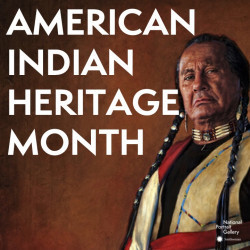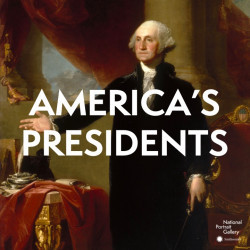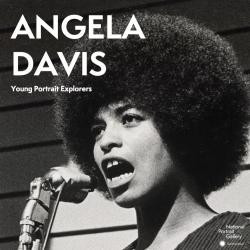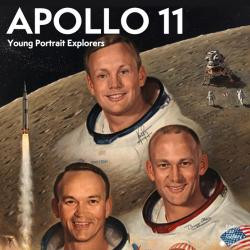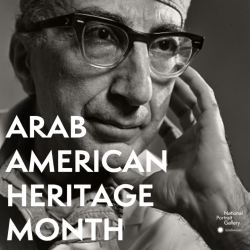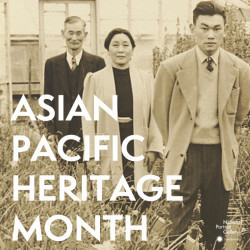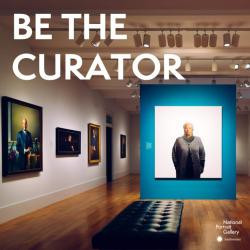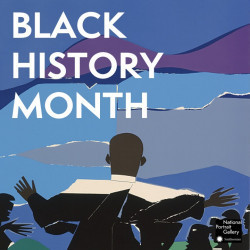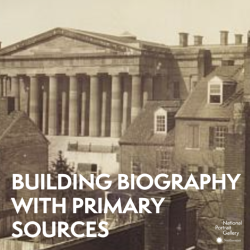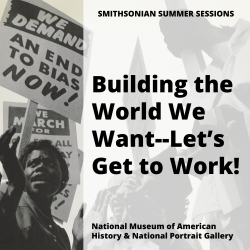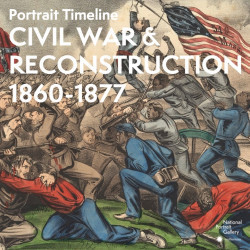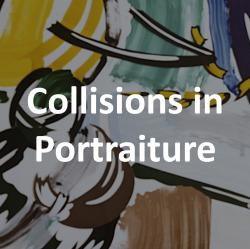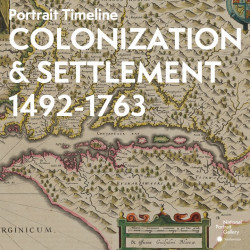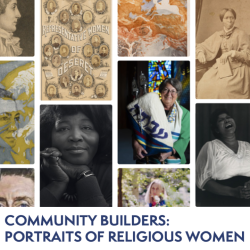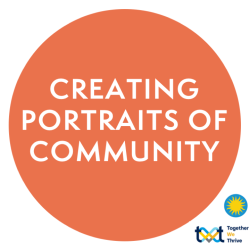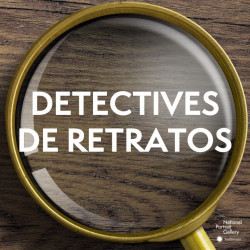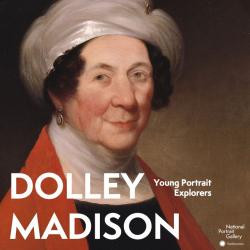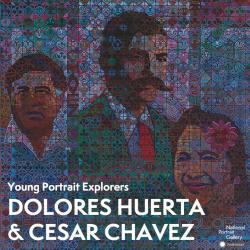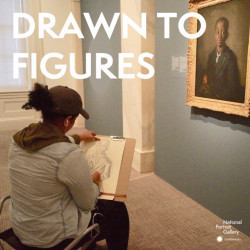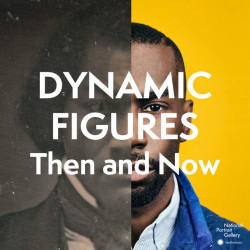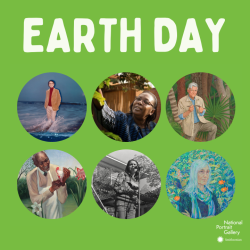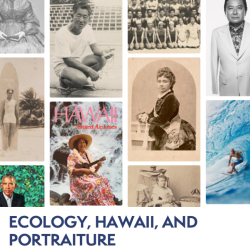Nicole Vance Nash's collections
American Indian Heritage Month with the National Portrait Gallery
<p>Meet the Native Americans who shaped the history, development, and culture of the United States of America. Use this collection to celebrate American Indian Heritage Month and embrace indigenous voices in the classroom year round. Native peoples have lived throughout what is now the United States since time immemorial and continue to make homes and communities here today. This collection mirrors parts rather than the whole of this continuing story. It also reflects the history of portraiture in the United States- we recognize that who is represented and how one is represented reflects the country's flaws as well as it's strengths<br></p>
<p>#NPGteach</p>
<p><strong>Keywords: </strong>Portraits, American Indian Heritage Month, American Indian, Native American, Indigenous, Ani-Yunwiya (Cherokee), Diné (Navajo), Chata (Choctaw), Sioux, Wah-Zha-Zhi (Osage), Ojibwe (Chippewa), Apache, Niitsitapi (Blackfeeet), Haudenosaunee (Iroquois), Nuuchu (Ute), Nuwuvi (Paiute), Seminole, Muscogee (Creek), Quapaw, Portraits</p>
 Nicole Vance Nash
Nicole Vance Nash
184
America's Presidents
<p>This Learning Lab collection complements the National Portrait Gallery student program, America's Presidents.</p>
<p></p>
<p>The America’s Presidents student program focuses on the idea of what we can learn about presidents and their legacies from how they are portrayed in their portraits, on what it means to look “presidential” in a portrait, and on how the portrayal of presidents has changed over time.</p>
<p>After completing the program, students will be better able to:</p>
<p>● Identify key components of a portrait and analyze how these components fit into the way the sitter is defined/remembered.<br>● Compare and contrast what different portraits reflect about how each president is portrayed and remembered.<br>● Identify American presidents and analyze their contributions to U.S. History.<br></p>
 Nicole Vance Nash
Nicole Vance Nash
90
Angela Davis: Young Portrait Explorers
<p>Learn about Angela Davis, her role as an activist, and how photographers use camera angles to tell us about the sitter.</p>
<p></p>
<p>#NPGteach</p>
<p></p>
<p>Keywords: Angela Davis, activist, activism, Black Panthers, public speaking, camera, angles, photographer</p>
 Nicole Vance Nash
Nicole Vance Nash
34
Be the Curator
<p>This Learning Lab complements the National Portrait Gallery's student program, Be the Curator. <br></p>
<p>Students will learn about the exhibition process, by touring and reviewing exhibitions, uncovering the roles of curators and exhibition designers, finding themes in exhibitions, and writing museum label text. The program culminates in a hands-on project where students will create their own thematic exhibition from objects in the National Portrait Gallery's collection.<br></p>
<p><strong>Objectives:</strong></p>
<ul><li>Understand the roles of the museum curator and the exhibition designer in a museum </li><li>Work to relate artworks to one another and find a common theme </li><li>Write museum labels that clearly communicate ideas to an audience </li><li>Estimate, measure, and calculate scale </li></ul>
<p>#NPGteach</p>
 Nicole Vance Nash
Nicole Vance Nash
98
Black History Month with the National Portrait Gallery
<p>Meet the Black Americans who shaped the history, development, and culture of the United States of America from 1700-present. Use this collection to celebrate Black History Month and embrace Black voices in your classroom year-round! </p>
<p>This collection mirrors parts rather than the whole of African American history and culture. It also reflects the history of portraiture in the United States, we recognize that who is represented and how one is represented reflects the country's flaws as well as it's strengths<br></p>
<p>#NPGteach</p>
 Nicole Vance Nash
Nicole Vance Nash
241
Building Biography with Primary Sources: Littleton's Life Story
<p>This lesson uses primary documents to trace the life of Littleton, an enslaved man who helped build the Old Patent Office Building. By using wills, ledgers, and other documents, students will build Littleton's biography. His life story invites us to consider the Antebellum period in American history (1832-1861) from a rarely considered perspective—that of an enslaved man. Littleton's life is emblematic of vast numbers of enslaved men whose likenesses and histories have gone unrecorded.<br></p>
<p>This Learning Lab collection has been created in conjunction with the Learning to Look Summer Teacher Institute hosted by the National Portrait Gallery July 2024. This collection highlights the work of Michael Hussey, Director of History and Research at the National Portrait Gallery.</p>
<p>#NPGteach</p>
 Nicole Vance Nash
Nicole Vance Nash
56
Collisions in Portraiture
<p>Collisions in Portraiture highlights the ways in which artists and sitters use portraiture to reveal what happens when cultures collide. By analyzing portraiture, students will consider how cultural collisions are visualized from the nineteenth to twenty-first centuries. Students will explore the powerful contributions to the history and culture of the United States through portraiture.</p>
<p><strong>Objectives:</strong> After completing this lesson, students will be better able to: </p>
<ul><li>Examine how modern and contemporary artists use portraiture to reveal aspects of a sitter’s individual, community/cultural, and national identity. </li><li>Identify key components of a portrait and discuss what one can learn about the sitter through these components. </li><li>Discuss the artistic choices that portrait artists make and consider how such decisions can reveal the artists’ viewpoints and also influence the viewers’ understanding of the sitters’ identity. </li><li>Use the museum’s collection as a gateway to investigating and exploring of the visualization of colliding cultures.</li></ul><p>#NPGteach</p>
<p><strong>Keywords</strong></p>
<p>Portraiture, Collisions, Harriet Tubman, Civil War, Stonewall, Roger Shimomura, Chief Joseph, Robert Rauschenberg, United Farm Workers</p>
 Nicole Vance Nash
Nicole Vance Nash
44
Colonization and Settlement (1492-1763) with the National Portrait Gallery
<p></p>
<p>This portrait timeline spotlights portraits of individuals who shaped the history, development, and culture of what is now the United States of America between the years 1492 and 1763.<br></p>
<p></p>
<p>#NPGteach</p>
<p>Keywords: colonization, settlement, colonies, Algonquian, Mohawk, indigenous people, British, colonialism, settlers, Virginia, Georgia, London Company, Columbus, Jamestown, Roanoke</p>
 Nicole Vance Nash
Nicole Vance Nash
40
Community Builders: Religious Women & Portraiture
<p>This collection highlights portraits of religious women who have created community in the United States. Use close-looking strategies to delve into their biographies, learn about their life’s work, and consider how artists represent religion in portraiture. </p>
<p><em>“Community Builders: Religious Women & Portraiture” is part of the teacher workshop series Classroom Conversations which uses portraits to explore topics and themes related to history and heritage months throughout the school year.</em> </p>
 Nicole Vance Nash
Nicole Vance Nash
19
Dolley Madison: Young Portrait Explorers
<p>Learn how Dolley Madison shaped the role of first lady of the United States (the wife of a U.S. president) by serving as a trusted friend and hostess (someone who entertains people) to important guests at the White House.</p>
<p>#NPGteach</p>
<p><strong>Keywords:</strong> Dolley Madison, First Lady, White House</p>
 Nicole Vance Nash
Nicole Vance Nash
22
Dolores Huerta and César Chávez: Young Portrait Explorers
<p>Learn about civil rights leaders Dolores Huerta and César Chávez and the Aztec symbolism in their portrait.</p>
<p>#NPGteach</p>
 Nicole Vance Nash
Nicole Vance Nash
30
Drawn to Figures with the National Portrait Gallery
<p>Discover your inner artist in this online workshop on sketching the human body. Artist Jill Galloway will highlight the techniques and challenges of figure drawing while providing guided instruction and helpful tips. Open to all skill levels, ages 13 and up.</p>
<p>Join us for new videos Thursdays at 11:00am EST on <a href="https://www.youtube.com/smithsoniannpg" target="_blank" data-saferedirecturl="https://www.google.com/url?q=https://www.youtube.com/smithsoniannpg&source=gmail&ust=1605886355234000&usg=AOvVaw01p62fkn0GK_K4Vt581Wsl">YouTube@smithsoniannpg</a></p>
<p>#NPGteach</p>
<p>Keywords: Drawing, Figure Drawing, Portraiture, Shading, Contouring, Proportions, How to, Face, Nose, Mouth, Eyes, Expression, Pose, Hands, Feet, Skin tones, Human Body, Artistic Techniques, Guided Drawing Instruction<br></p>
 Nicole Vance Nash
Nicole Vance Nash
134

